What is Sun Damage of the Skin?
Ultraviolet (UV) light is found in sunlight. As an ionizing radiation it can cause chemical reactions in the skin and elsewhere. Many have experience the effects of UV through sunburn. UV is both beneficial and damaging for human health. There are three major UV types we are most concerned about:
| Name | Abbreviation | Wavelength |
|---|---|---|
| Ultraviolet A (long) | UVA | 400 nm–315 nm |
| Ultraviolet B (medium) | UVB | 315 nm–280 nm |
| Ultraviolet C (short) | UVC | 280 nm–100 nm |
UVA, UVB and UVC can damage collagen fibers in the skin and accelerate aging. This radiation causes cancer via indirect DNA damage by free radicals and reactive oxygen species. UVA does not damage DNA directly like UVB and UVC, but it can generate chemicals which in turn can damage DNA. UVA does not cause reddening of the skin, and not have a good measurement for blocking UVA radiation. Nevertheless sunscreen to block both UVA and UVB is helpful in protecting from sun damage.
Lentigo or lentigines are brown pigmented spot on the skin. They are also referred to as Solar lentigo (liver spots) seen commonly in older patients, or those who do not protect their skin from UV radiation.
How to Protect from Sun Damage?
Use sunscreen. Dr. Melamed recommends using sunscreen with a minimum Sun Protection Factor (SPF) of 30, although he routinely recommends higher SPF of 60-65 for maximal protection.
How to Treat Sun Damaged Skin?
If you have neglected your skin and spent too many days baking in the sun, then you probably have severely damaged skin. Today is the best time to visit Dr. Melamed and have a complete skin damage evaluation, and start an immediate treatment program.
This patient’s skin evaluation show extensive sun damage and pigmentation.
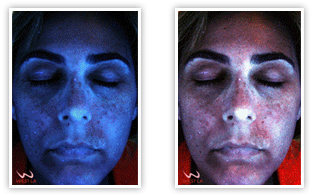
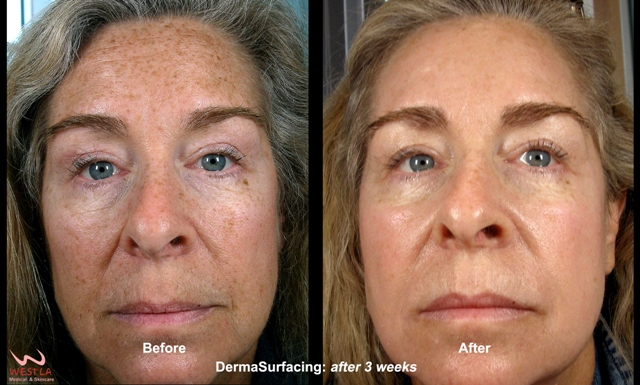
Intense Pulsed Light (IPL)/ Photo-Facial, Microdermabrasion and Chemical Peels and Laser Treatments can all successfully treat:
- Brown spots (age spots, liver spots) and pigmentation
- Photo-Aging (rough texture, red and brown discolorations)
- Face veins (telangiectasias)
- Redness and brown mottled pigmentation on the face, neck, chest, arms and hands
- Rosacea
- Actinic keratoses (pre-cancers) and warts
IPL will also improve skin tone and texture, resulting in more vibrant, radiant skin. Photo-rejuvenation using IPL is a non-invasive treatment that can treat skin damage without disruption of the skin’s surface, hence, “no down time.” Several treatments (four to six) are usually necessary and are typically performed 3-4 weeks apart.
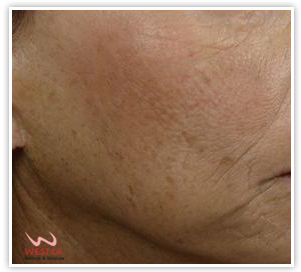
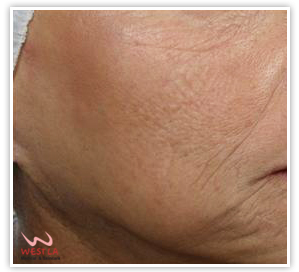
IPL is like a laser, but it works with multiple wavelengths instead of just one, which is how lasers work. We use the most powerful, state-of-the-art, advanced IPL technology available. Treatments are well tolerated and usually do not require an anesthetic. You will feel some stinging, like the snapping of a rubber band, and some burning, like a sunburn. Treatments sessions times will vary on the area treated, but usually last 20-30 minutes.
Preparation before your treatment:
You must not be tan on the treated areas! Avoid self-tanners for 2 weeks prior to your appointment. The treated area(s) must be clean, without makeup.
What to expect after your treatment:
After IPL your skin will appear red for up to several hours. You may also develop a brown, freckled appearance, which looks like “coffee grinds”. This occurs in areas of brown pigmentation and can last several days to a week.
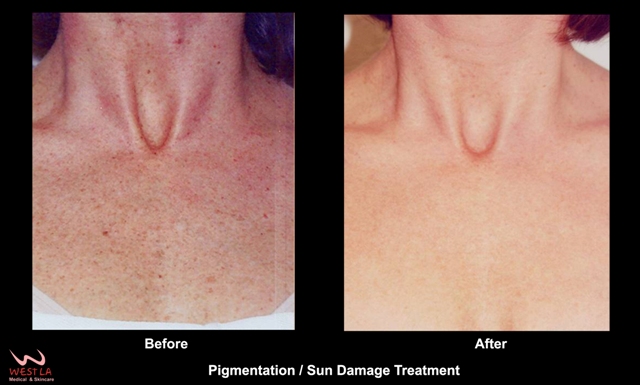
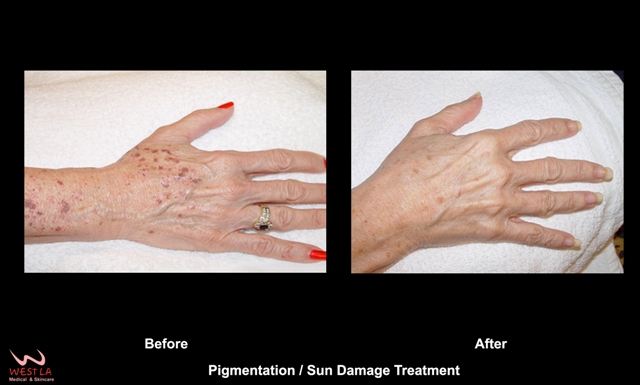
If you have any questions about Photo Facials, IPL, DermaSurfacing or the treatment of sun damaged skin or any other procedure or would like to make a Complimentary Consultation please schedule and Online Appointment or call toll free 1-88-88-West LA (310-473-1734).

